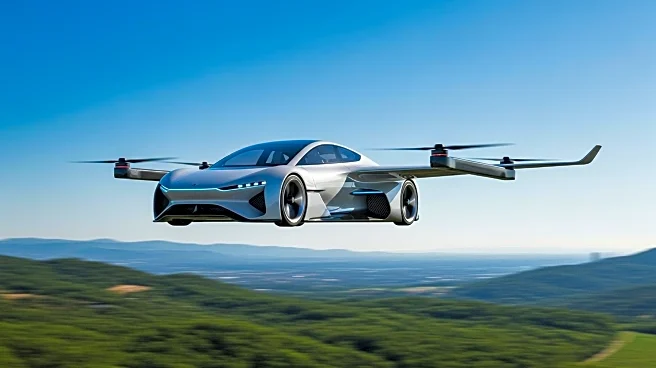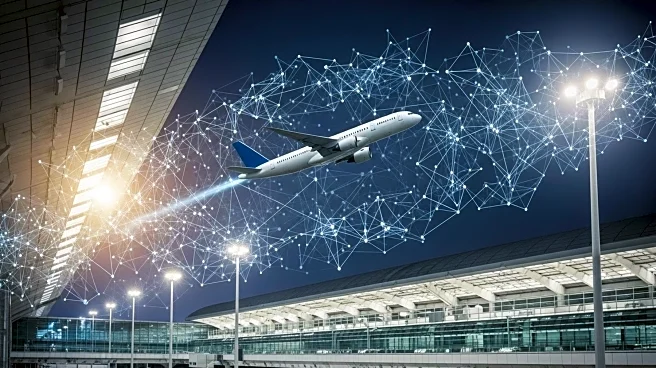What is the story about?
What's Happening?
In a groundbreaking development, the first public flight of a self-flying passenger drone took place in Rwanda, Africa, featuring the EHang EH216-S, a two-seat electric Vertical Take-Off and Landing (eVTOL) aircraft. This event marks a significant step towards cleaner and more connected urban environments. The flight, which reached an altitude of approximately 100 meters, was part of a collaboration between Rwanda's government, China Road and Bridge Corporation (CRBC), and EHang. The initiative aims to position Rwanda as a hub for advanced air mobility (AAM) in Africa. The EH216-S, being all-electric, emits zero tailpipe pollution and operates with minimal noise, offering a glimpse into the future of urban travel.
Why It's Important?
The successful demonstration of the self-flying passenger drone in Rwanda highlights the potential for transforming urban transportation. This innovation could significantly reduce the need for extensive road infrastructure, preserving green spaces and reducing carbon emissions. As traditional vehicles remain major contributors to greenhouse gases, the adoption of such technology could play a crucial role in combating climate change. Additionally, the reduced maintenance and fuel costs associated with electric vehicles could offer economic benefits to consumers. The project also underscores Rwanda's commitment to fostering a progressive regulatory environment for advanced air mobility, potentially setting a precedent for other nations.
What's Next?
While consumer flights are not yet available, the successful demonstration in Kigali indicates that the technology is ready for scaling. As self-flying passenger drones gain traction globally, with tests already conducted in China, the UAE, and parts of Europe, Rwanda's early adoption could inspire similar initiatives worldwide. The focus will likely shift towards developing regulatory frameworks and infrastructure to support the widespread use of such vehicles. Stakeholders, including governments and private companies, may explore partnerships to accelerate the integration of this technology into urban transport systems.
Beyond the Headlines
The introduction of self-flying passenger drones could have profound implications beyond transportation. By reducing urban congestion and pollution, these vehicles could improve public health, particularly in densely populated areas suffering from high smog levels. The shift towards electric and autonomous vehicles also raises questions about the future of employment in traditional automotive industries and the need for new skills in drone operation and maintenance. Furthermore, the ethical and safety considerations of autonomous flight will require careful attention as the technology becomes more prevalent.
AI Generated Content
Do you find this article useful?















